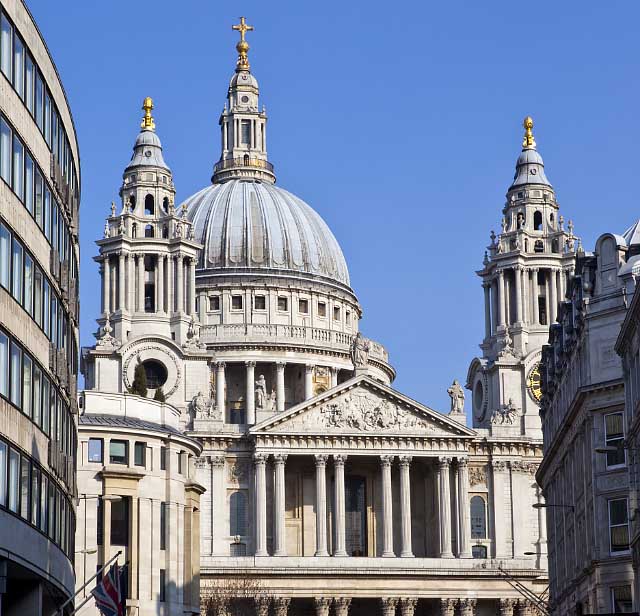St. Pauls Cathedral, The Crypt
A Cathedral dedicated to St Paul has overlooked the City of London since 604AD, a constant reminder to this great commercial centre of the importance of the spiritual side of life.
The current Cathedral – the fourth to occupy this site – was designed by the court architect Sir Christopher Wren and built between 1675 and 1710 after its predecessor was destroyed in the Great Fire of London. Its architectural and artistic importance reflect the determination of the five monarchs who oversaw its building that London’s leading church should be as beautiful and imposing as their private palaces.
Since the first service took place here in 1697, Wren's masterpiece has been where people and events of overwhelming importance to the country have been celebrated, mourned and commemorated. Throughout, St Paul’s has remained a busy, working church where millions have come to worship and find peace. It is a heritage site of international importance which attracts thousands of people each year, a symbol of the City and Nation it serves and, above all, a lasting monument to the glory of God.
Fast Track Entry to St. Paul’s Cathedral with The London Pass
Look out for…
- The Whispering Gallery, situated 30 metres above the cathedral floor and is famous for its acoustics.
- The Golden Gallery—which offers breathtaking panoramic views of central London for those with the energy to climb the 530 steps.
Did you know?…
- St Paul’s cathedral was the tallest building in London from 1710 to 1962
- St Paul’s is the only cathedral to have been designed, built and completed by a single architect. It took 35 years to build, 1675–1710.
- The present St Paul’s is the fourth to occupy the site on Ludgate Hill; the first cathedral dedicated to St Paul was built in 604 AD.
- There are over six million pieces of mosaic in St Paul’s Cathedral.
- The St Paul’s Cathedral Grand Organ has 7,256 pipes, 108 stops and 5 manuals. Both Mendelssohn and Handel played the St Paul’s organ.
- The crypt is the final resting place for many famous names including Nelson, Wellington, Joseph Turner and Sir Alexander Fleming.
- St Paul’s was the venue for some of the nation’s grandest funerals, including Admiral Lord Nelson (1806), Arthur, Duke of Wellington (1852) and Sir Winston Churchill (1965).
All information is drawn from or provided by the museums themselves and every effort is made to ensure it is correct. Please remember to double check opening hours with the venue concerned before making a special visit.

